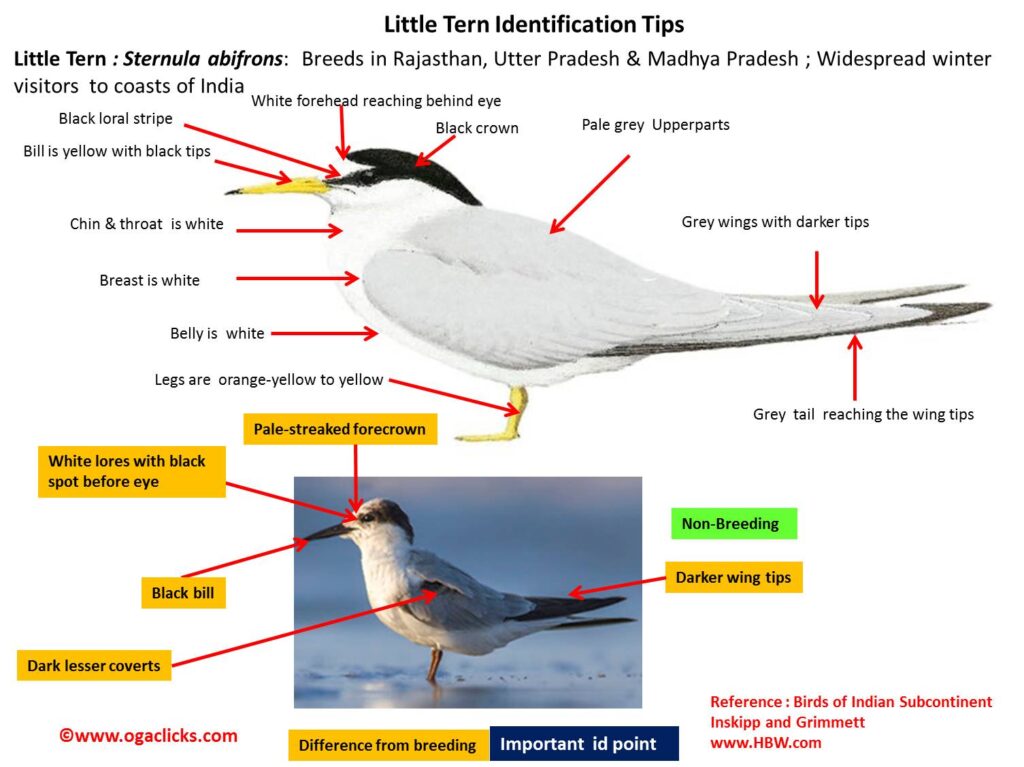
Little Tern Sternula albifrons
Etymology:
- Sternula : Old English name “stearn” for terns , believed to be derived from Danish and Norwegian terne or Swedish tärna
- Albifrons : Latin word albus white; frons forehead
Vernacular names: Guj: Nani dhomdi, Nani vabagali, Mar: Chota Surya, Ta: Cheeti ala, Sinh: Muhudu lihiniya, Hindi: Choti Tehari
Distribution in India: Widespread winter visitor except North, North West and parts of East India.
Description: Size of 22–28 cm; wt. of 47–63 g; wingspan of 47–55 cm. It is a small tern with white forehead, cap and lores are black, back and wings are grey, white rump and white underparts The bill is bright yellow with small dark tip; legs and feet are orange-yellow to yellow. The non-breeding adult has pale-streaked forecrown, white lores with black spot before eye, dark lesser coverts, and blackish bill and legs. The juvenile has black chevrons on mantle; paler secondaries and inner primaries that contrast with darker wing-coverts and outer primaries. First-winter plumage is acquired in Oct, and is similar to non-breeding adult.
Habitat: It is found in subtropical to temperate regions, coastal area, also occurs inland along rivers and at lakes and reservoirs and on oceanic islands. In non-breeding season, it is found in tidal creeks, coastal lagoons and saltpans
Food habits: It eats small fish and crustaceans, insects, annelids and molluscs. It forages by quartering back and forth over water. It specializes in prolonged hovering and plunge-diving into shallow water, often at edge of advancing tide. Groups of birds dive synchronously. It takes insects from vegetation and water surface by aerial-dipping. It also hawks for small flying insects over water.
Breeding habits: Breeds in Mar-Jul in W Africa, Banc d’Arguin, Mauritania, May–Jun in Europe and India, and May–Aug in Sri Lanka. They breed on barren or sparsely vegetated sandy, shell, rocky and coral islands, shingle beaches, spits in estuaries and lakes, saltmarshes, saltpans and rivers, and on reefs. They nest in shelter of bushes, floating objects, abandoned concrete structures, and also roofs. The nest is a bare structure .They lay a clutch of 2–3 eggs. The incubation period is 21–24 days; .The chicks can recognize parents’ voices on day one. The fledging period is 20–24 days.